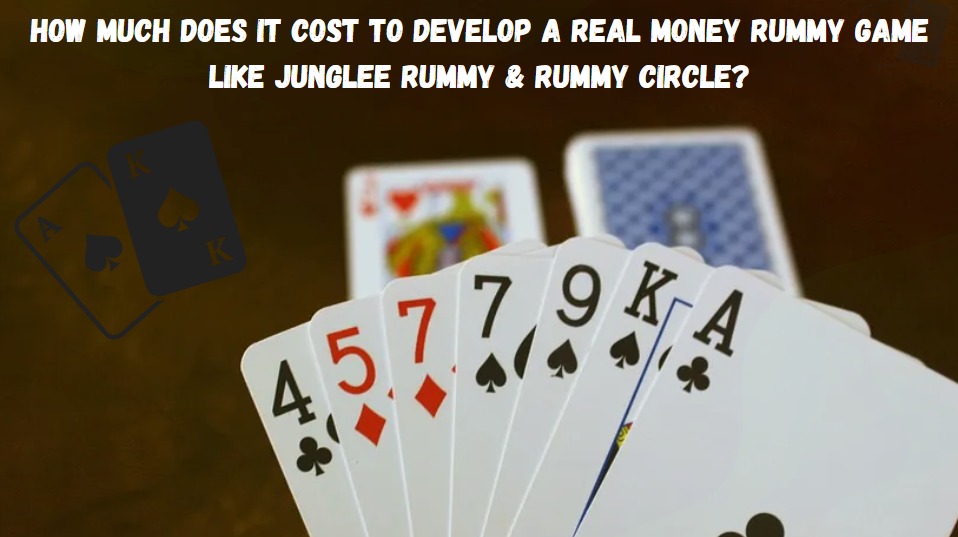Introduction:
Rummy is a famous card game that is played to form sets or runs of cards in your hand. It is commonly played by 2 to 6 players and is known for its combination of skill, strategy, and luck. The primary objective of Rummy is to arrange your cards into specific types that are known as “melds.” These melds can be sets (groups of cards with the same rank but different suits) or runs (sequences of cards in the same case).
How Does Rummy Work?
Rummy is a classic card game that two to six players typically play, and its main objective is to form sets or runs of cards in your hand. The game can be played with a standard 52-card deck, though variations are using multiple decks or unique cards. Here’s a basic overview of how the game works:
1. Setup:
1. Deck: Shuffle the deck and deal cards to each player. In a two-player game, each player gets ten cards. For more players, reduce the number of cards for each player accordingly.
2. Remaining Cards: The remaining deck forms the draw pile, and the top card is placed face-up next to it to start the discard pile.
2. Gameplay:
1. Objective: The goal is to form valid sets and runs with the cards in your hand.
2. Turns: Players take turns in a clockwise manner. On each turn, a player has to draw a card, either from the draw pile or the discard pile, and then discard a card to the discard pile.
3. Melding Sets or Runs: Players aim to form “melds,” which can be sets of three or four cards of the same rank (e.g., three 7s) or runs of three or more consecutive cards in the same suit (e.g., 3, 4, 5 of hearts). Once players have the required cards, they can place the meld face-up on the table.
4. Valid Declaration: When a player has formed proper sets or runs meeting the game’s requirements (some variations have different rules), they can declare or “go out.” That means they must eliminate their last card by forming a meld with it or discarding it.
3. Scoring:
Scoring in Rummy is based on the value of the cards left in a player’s hand when someone goes out. Face cards typically carry 10 points, aces can be 1 or 11 points, and numbered cards have their face value.
4. Winning:
The game continues until a player reaches the previously agreed-upon target score, and the fewest points wins.
Additional Rules and Variations:
- Some versions of Rummy have specific rules for picking up multiple cards from the discard pile.
- There might be rules for what to do when the draw pile runs out.
- Unique cards, like jokers, might be used in some variations as wild cards.
- Each player might have a limit on how many melds they can make during a turn.
It’s important to note that there are numerous variations of Rummy, including Gin Rummy, Indian Rummy, and others, each with its own specific rules and nuances.
Always agree on the rules and variations before starting a game of Rummy to ensure everyone is on the same page.
Online Rummy Game App Advantages:
Online Rummy game apps have achieved popularity due to several advantages they offer players. Here are some of the key benefits:
- Accessibility and Convenience
- Variety of Games and Formats
- Player Pool and Opponents
- Tutorials and Practice Sessions
- Bonuses, Rewards, and Promotions
- Security and Fair Play
- Community Interaction
- Quick Games and Instant Gratification
- Cash Tournaments and Prizes
Features that will affect the App Development Cost Platforms
Several features can seriously impact the development cost of an online Rummy game app. The complexity, functionality, and the platform chosen for development are all crucial factors. Here are specific features that can affect the cost:
- Platform Selection
- User Authentication and Profiles
- Game Lobby and Matchmaking
- Game Variations and Rules
- Real-Time Multiplayer Functionality
- Payment Gateway Integration
- Chat and Social Features
- AI and Game Logic
- Graphics and Animation
- Regulatory Compliance
- Testing and Quality Assurance
- Scalability and Maintenance
Read More: Best Technologies For Developing A High-Quality Rummy Game
How much does it cost to develop a Ream Money Game?
The cost to develop a real money game (RMG) can vary greatly depending on several factors, including the game’s complexity, the technology used, the number of platforms it will be available on, and the developer’s experience and reputation.
Here is a research of some of the critical factors that can affect the cost of developing an RMG:
- Game complexity: The more complex the game, the more time and resources required to develop it. That includes factors such as the number of game mechanics, the amount of artwork and animations, and the level of artificial intelligence required.
- Technology used: The type of game engine and other technologies used to develop the game can also affect the cost. For example, developing a game in a proprietary game engine will be more expensive than creating it in a free and open-source game engine.
- Several platforms: Developing the game for multiple platforms (e.g., Android, iOS, and web) will be more expensive than developing it for a single platform.
- Developer experience and reputation: More experienced and reputable developers and rummy game development companies typically charge higher rates.
It is important to note that these are just estimates. The actual cost of developing an RMG will vary depending on the specific requirements of the game.
If you are interested in developing an RMG, it is essential to get quotes from multiple developers to get a better understanding of the costs involved. You should also carefully consider your budget and requirements before making a decision.
Conclusion:
Developing a real money Rummy game app akin to Junglee Rummy or Rummy Circle involves various intricate features and functionalities. The cost estimation for such a project can vary significantly based on several factors. The complexity of the game, the number of platforms for which it’s developed, and the specific features incorporated are key determinants of the overall cost.
Creating a platform that mirrors the capabilities and appeal of established apps like Junglee Rummy or Rummy Circle involves a significant investment in both time and resources. Real money gaming applications demand stringent security measures to ensure fair play and secure financial transactions, thus contributing significantly to the development cost.
The complexities of integrating multiple features, such as robust user authentication, intricate game variations, real-time multiplayer functionality, secure payment gateways, high-quality graphics and animations, AI development, and legal compliance measures, all contribute to the total cost.
Additionally, ongoing maintenance, updates, and scalability planning should also be considered in the overall budget. The choice of rummy game development company, their experience, location, and hourly rates further impact the total cost.
Therefore, the cost to develop a real money Rummy game app resembling Junglee Rummy or RummyCircle can range widely based on the specific requirements, and it is advisable to consult with experienced developers or development firms to get a more accurate estimation based on the project’s unique needs.


